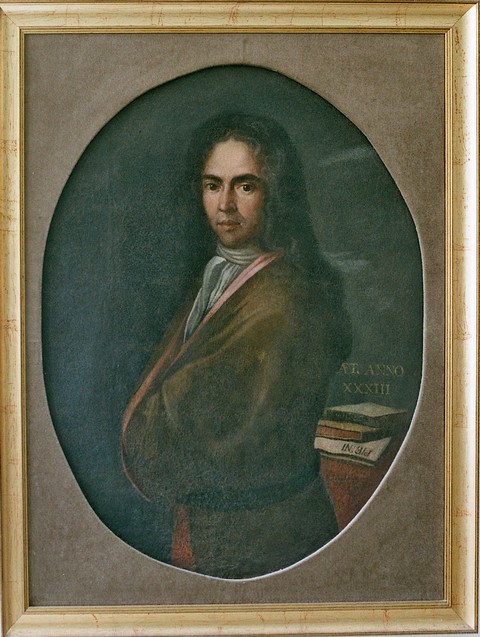 | CRAVAT, the universaly known name of the necktie, has its origin in the name ov Croats. As an unavoidable fashion element, especially for representative pruposes, it can be met in the remotest parts of the Globe. It is without any doubt the most widespread fashion element in the world, bearing a national name. On the photo on the left is Ivan Gundulic (1589-1638), distinguished Croatian Renaissance writer from Dubrovnik, bearing the earliest known version of the Cravat. World Cravat Day, established by Academia Cravatica in Zagreb, is celebrated each year on 18th October. |
 Ivan Gundulic (1589-1638) with his cravat in 1622. Source: Acadmia Cravatica. The earliest known usage of cravat in history is by Ivan Gundulic (1589-1638), a famous Croatian poet from the City of Dubrovnik. Note that Gundulic died the year when the French emperor Louis XIV was born. Croatian soldiers served in many European armies since the seventeenth century. So in the French army in the 17th century, during the reign of Louis XIII, there was a cavalry composed exclusively of the Croats, called Royal - Cravate, which existed in the period of 1664-1789. These soldiers gave the world something that is today unavoidable in fashion: the tie, called la cravate by the French and by the Germans die Krawatte - the expression was coined from the Croatian name, and mentioned for the first time in 1651. The name entered also
and many other. So when you wear a tie, remember its Croatian origin. Many variants of the Croatian name can be found in old documents (for more information see eg. [Klaic, Hrvati i Hrvatska]): Crovat, Cravat (-> cravate), Crobat, Corbat, Krabat, Charwath, Crawat, Krawat, Churbate, Grawat, Charwaten, Corbetha, Curewate, Corwate, Chrowat, Crowat, etc. In Italy one can encounter the second names of Cravati, Cravatti, Cravetto, Cravedi, Craviotto, Croattimi, Croatto, obviously all of them derived from the Croatian name. You can easily check this in Italian phone books. More information at www.croatianhistory.net |